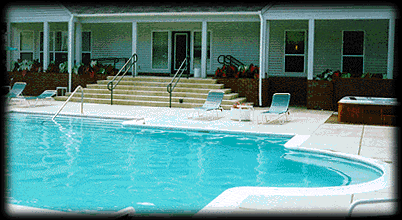
|
|

|
|
By Lois Hobbs, Education Writer

FRESNO DESK - During the hot summer season, few things are more inviting to a kid than a cool splash in a nearby pool. But in the seconds it takes to get wet, a child can drown or be seriously injured. Already this year:
- A four-year-old Arizona boy tragically drowned after sneaking through a gate and into an unsafe neighbor's backyard pool.
- A 2 1/2-year-old Florida boy drowned after falling into the shallow end of a motel pool. Other motel guests who saw the boy flailing in the water thought he was playing.
- A 2-year-old Louisiana girl drowned in the swimming pool at her home. The baby sitter caring for the child at the time said the girl was out of sight for only a few minutes.
About 2,000 kids up to age 19 drown each year, says the National Safety Council, which ranks drowning as the third leading cause of deaths from injury for kids under age 5 and second among unintentional injuries for older children.
Backyard pools hold a particular hazard for young kids, says the U.S. Consumer Product Safety Commission: Of 550 residential pool deaths in 1991 (the most recent year statistics are available), 320, or 58.1%, involved kids under age 5, most often kids age 1-2.
Annually, about 2,300 infants, toddlers and preschoolers are treated in emergency rooms for pool-related injuries, often to their heads and spines.
Although home pools tend to be thought of as an indulgence of the rich, 'this is a serious problem not just for the Rockefellers,' but for families of all economic and ethnic backgrounds, says Ann Brown, CPSC chairwoman.
She notes that drowning ranks as the leading cause of accidental death and injury to kids under 5 in Florida, Texas, California and Arizona.
Most often, these deaths are preventable if only parents and caregivers realize how vulnerable young kids - including those who have taken swimming lessons - are in water environments, says Brian Metheny, a Red Cross certified swim and water safety instructor for nearly thirty years.
Any parent who's watched a group of 3- and 4-year-olds in a water skills class would 'never leave a kid alone poolside,' says Metheny of Phoenix.
Most kids under age five lack 'the reasoning skills, the muscle coordination, the level of readiness' needed to learn to swim or respond safely in a dangerous situation, says Karen White, health and safety associate, American Red Cross in Washington, D.C.
Given their energy and curiosity, poorly supervised kids are at great risk around the water, White says. The Red Cross offers aquatic programs for kids as young as 6 months, but the emphasis through age 5 is on 'water orientation, becoming comfortable in a water situation,' not necessarily on swimming instruction, White says.
Confidence in the water and swim skills are vital to keeping kids safe, but too many parents mistakenly believe these alone will "drown-proof" their kids, says Mary Marlin, community education manager for Children's Hospital of Orange County (Calif.) and co-chairwoman of the county's Drowning Prevention Network.
'We've been told by physicians that a child can lose consciousness in two seconds,' Marlin says. 'Before they even have a sense of drowning (and figure out what to do) they're unconscious and in serious trouble.'
Another popular myth is that kids in danger of drowning make enough noise to grab someone's attention. In fact, research shows that young kids who slip into pools do not make a splash or cry out, Marlin says. 'He or she will sink. Very quietly and very fast.'
Experts say that reducing the number of child-drownings requires increasing the number of protective barriers around a pool, ensuring constant supervision of kids in or near the water and being prepared for an emergency.
In May, the CPSC issued voluntary safety standards for all residential pools, calling for:
- A four-sided fence, at least 4 feet high, around the pool. It should be non-climbable and offer no spaces a child can pass through.
- Fence gates that are self-closing and self-latching.
- Alarms on every house door leading to the pool to signal if a child has gone outside.
- A motor-driven safety pool cover to securely cover the water area.
Experts also recommend keeping objects out of the pool area that might attract a child later and draining standing water off of spa or pool covers because kids can drown in as little as two inches.
Meanwhile, parents and caregivers have to 'steel themselves from answering the door or phone' or doing anything that will take their attention away from kids who are playing in or near the water, Brown says.
In a water emergency, preparedness can be the difference between life and death, Marlin says. Having a phone poolside, with emergency numbers posted, keeping rescue devices readily accessible and making sure anyone responsible for kids knows cardiopulmonary resuscitation can buy you the seconds needed to save a life, she says.
'I don't know why a parent wouldn't want to learn CPR. You could be the (only) person available to help your child survive.'